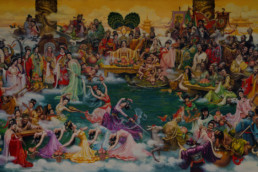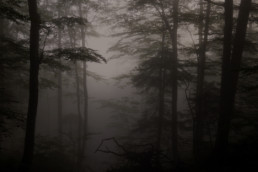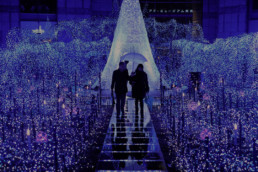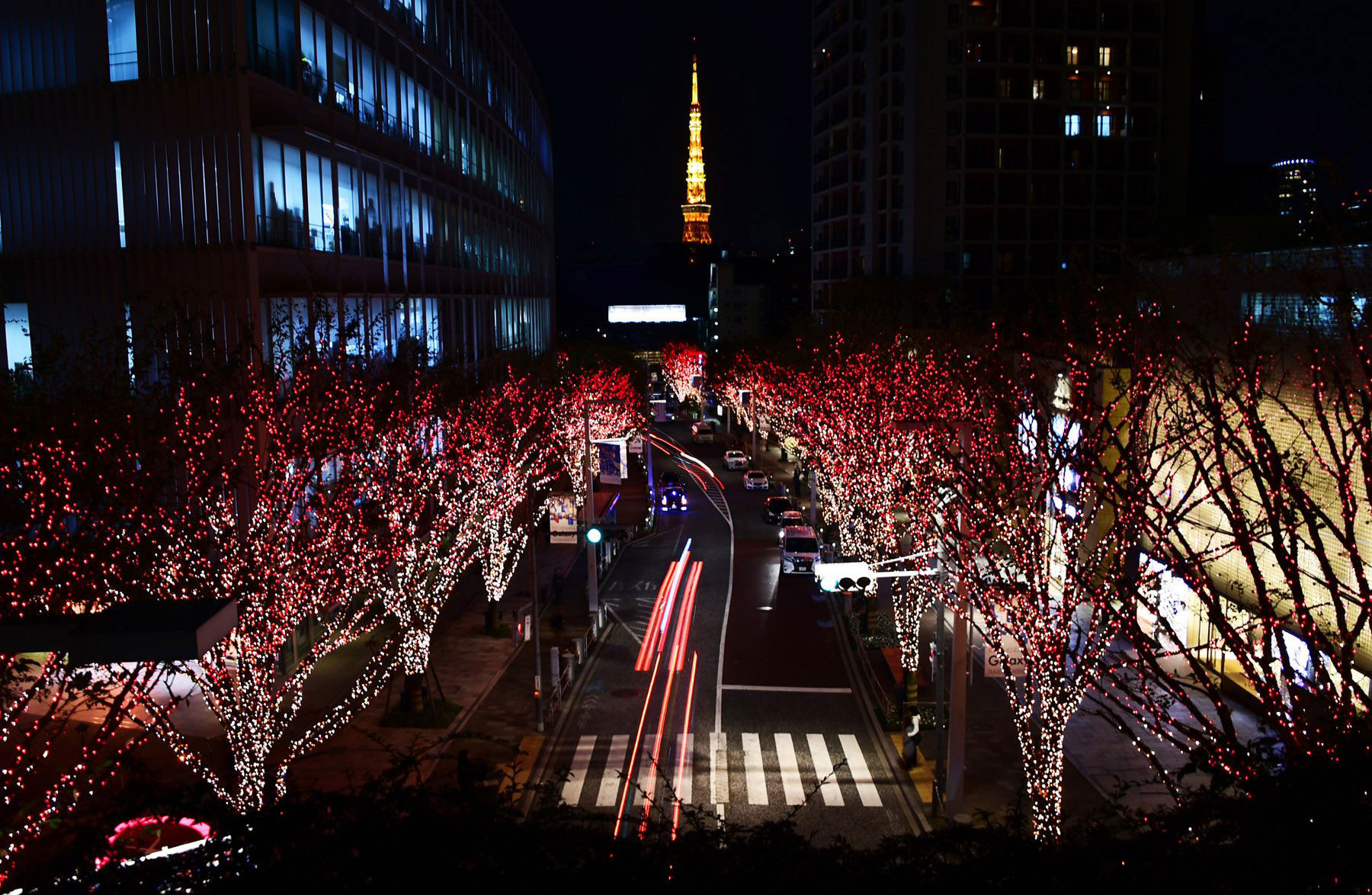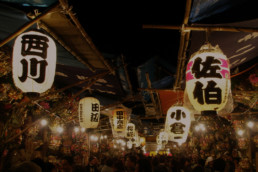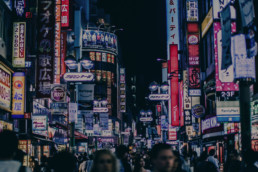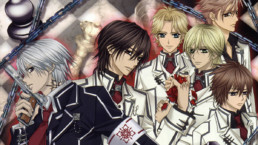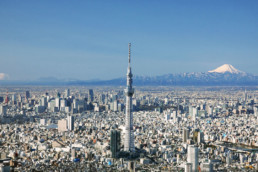Japan Folklore: Tennin
Tennin

Photo credits: google.it
The roots of Buddhism in Japan are very deep and follow the history of the country itself, thus evolving together with it. In fact, Japanese Buddhism largely consists of the continuation or evolution of ancient schools of Chinese Buddhism. Some of these schools, now no longer existing in their country of origin, once introduced into the Japanese archipelago continued to live and change.
Furthermore, through these religious relations, Chinese writing and culture were also introduced in the country representing the base of the proper History of Japan (6th century). Buddhist monks will retain the position of the most important intermediary and interpreters of the continental culture in Japan for a long time.
Celestial Beings
When we refer to Buddhism, we are immediately led to think of Buddha. In reality, there are other very important figures that accompany the Buddha and who live in the Buddhist paradise with him. Among these figures we find the Tennin, that are the result of a long process of assimilation and transformation.
Tennin , whose name is made up of the kanji 天 which means sky and 人 person, are literally "celestial creatures", spiritual beings. They include the HITEN 飛天, Flying Beings, the UCHUU KUYOU BOSATSU 雲中供養菩薩, Bosatsu on Clouds, the TENNYO
天女,Celestial Maidens, the TENNOTSUKAI 天の使い, heavenly messengers, and the KARYŌBINGA 迦陵頻伽, who are Celestial Assistants that appear in many forms but that usually possess the body of a bird and the head of a Bodhisattva.
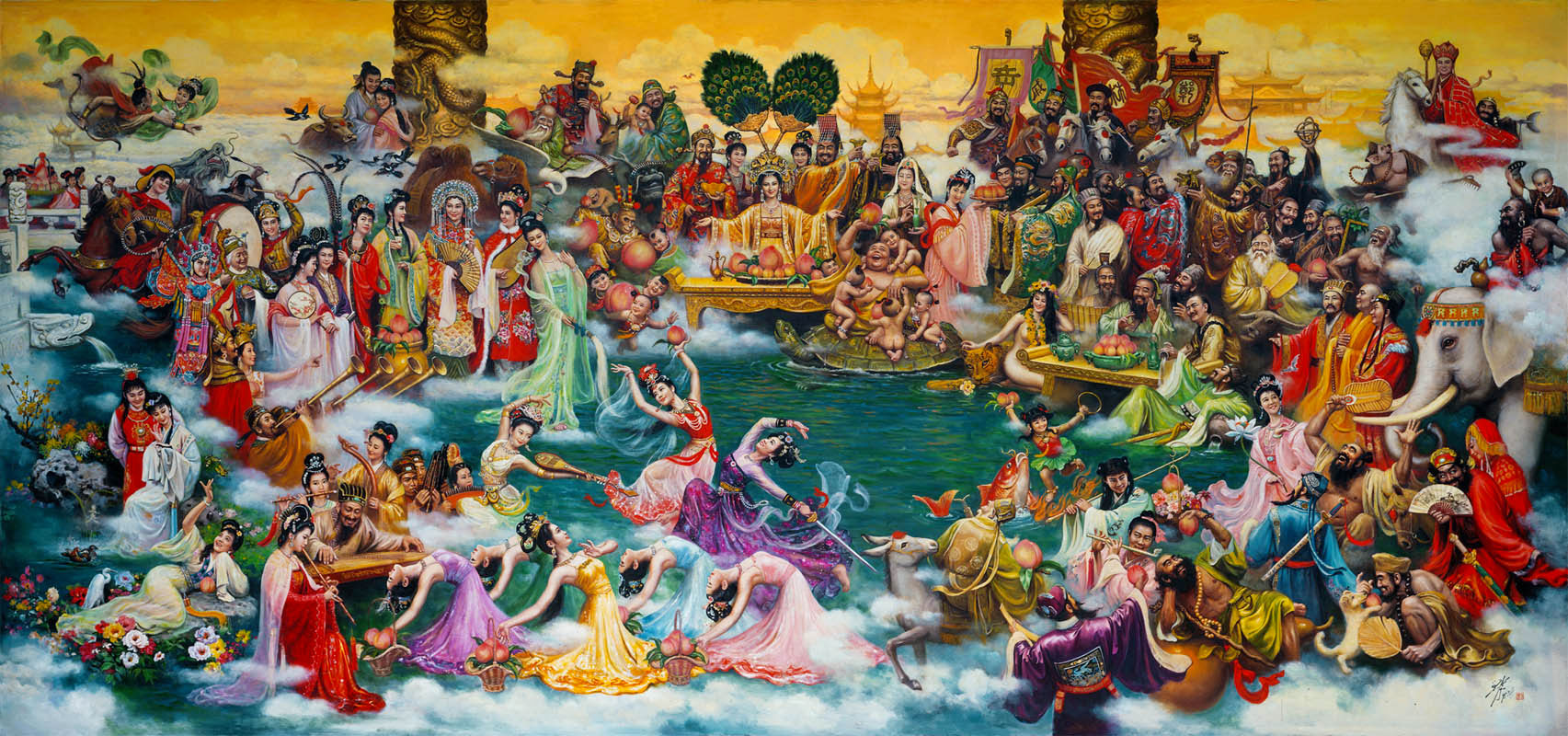
Photo credits: google.it
They are not specially worshiped, although people do accord them some veneration by placing flowers, water, and rice at their feet. Their function is to protect Buddhist law by serving the DEVA, or else, the TENBU group, that includes other divinely spiritual beings, and creatures like the Dragon, the bird-man Karura, plus Celestial Nymphs and Heavenly Musicians among them.
Most originated in the ancient Vedic traditions of India. The Sanskrit word used to refer to this celestial beings is Apsara, often represented as divine beauties and dancers who populated Lord Indra’s court in Indian mythology. In Japan the Apsaras take the name of TENNIN.
In the arts, they frequently appear as dancers and musicians adorning statues, paintings and temples in China, Japan and Southeast Asia. Their attributes are not clearly specified in Buddhist texts and therefore their appearance is quite varied. In Japan, they are often shown standing or sitting on clouds or flying in the air in graceful poses. They are often shown playing musical instruments or scattering flowers to give praise to the gods, and usually wear light and floating celestial garments, embellished with scarves of gauze, the Tenne.
Japan Travel: Aokigahara
Aokigahara
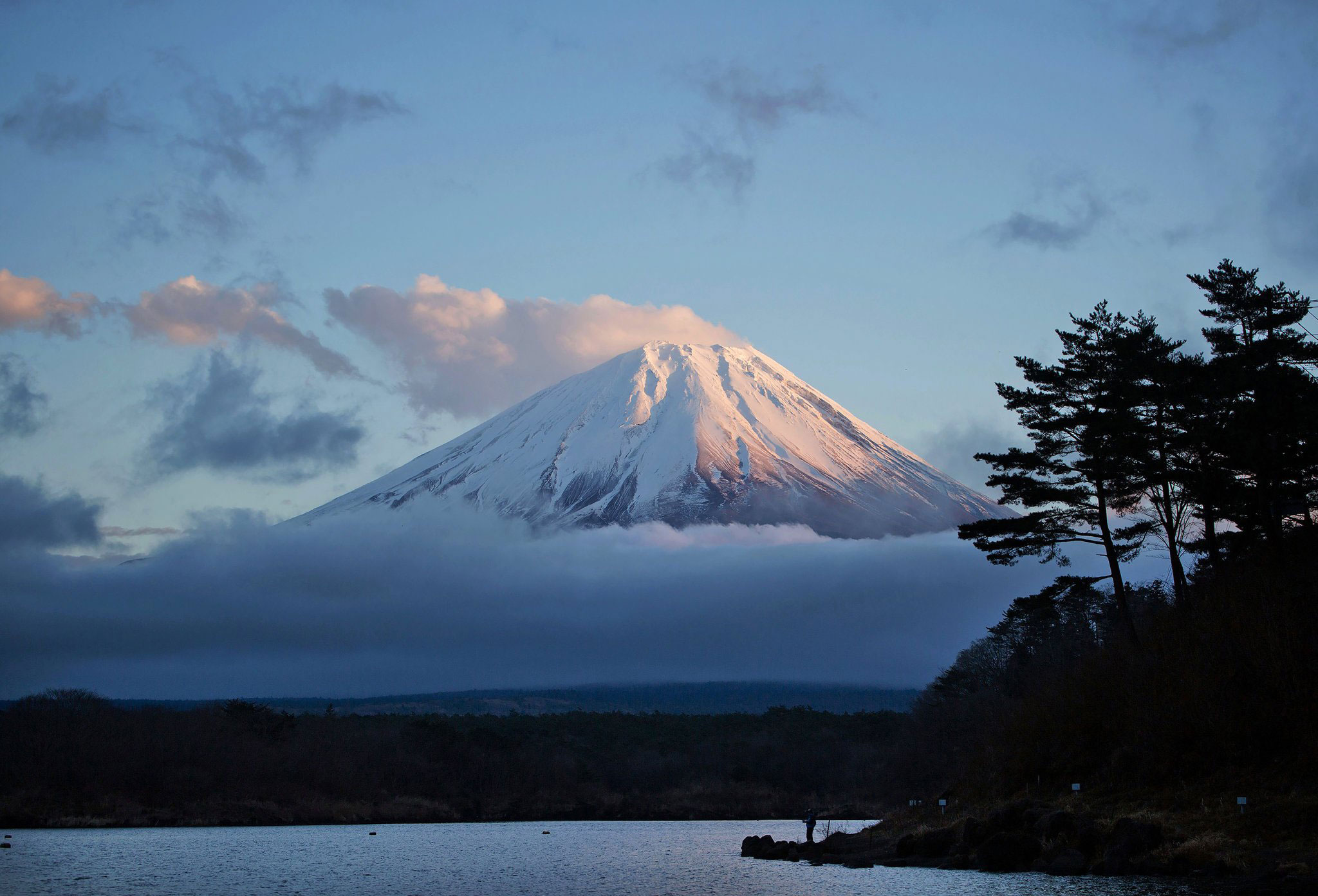
Photo credits: Ko Sasaki for The New York Times
Jukai, the sea of trees in which the soul drowns
At the foot of Mount Fuji, born from the volcanic eruption of Mount Nagao in 864 C.E., lies Aokigahara (青木ヶ原) best know with the name of Jukai (樹海, sea of trees). It is a thick forest that extends for 35 km² and that is made of caves and a maze-like vegetation with its cypresses, oaks and shrubs, including the Japanese snow flower. Its particular conformation prevents wind and solar rays from entering, giving it a spectral and silent appearance. In winter the thick fog that surrounds it forbids access to visitors who are even unable to find the entrance.
That of Aokigahara is a sad story because leaving the official paths means getting lost in its immense labyrinthine structure. Those who usually abandon the established path have only one intention: suicide. Due to this, it is not difficult to come across sign boards in both Japanese and English that try to dissuade people with macabre intentions.
“Your life is a precious gift from your parents”
“Please consult police or a doctor before you decide to die“
“Do not keep it to yourself, talk about your troubles”

Photo credits: Google images
The suicide forest
Statistics about Jukai, that go from 1950 up to today, will give you chills: from 30 to 105 suicides a year. In 1970 the Japanese government decided to set up a special annual patrol made of police officers, volunteers and journalists. This patrol is committed to searching and removing corpses, but this does not exclude the terrible possibility of running into skeletons and rotten bodies when walking through the forest. It is also possible to find Ema: wooden plaques on which suicides wrote their curses against those who forced them into taking their own lives.
Stepping away from the official path also means meeting colorful thread stretched between the trees, and this is because not all the people who enter the forest have decided to die. Some just want to reflect and these threads are necessary to find the way in case someone decides to live. However, following them almost always leads to something: some objects, an abandoned tent and, in the worst case, the lifeless body of someone who made the wrong choice.
There is another peculiarity that makes Aokigahara disturbing and mysterious: smartphones and all electronic devices stop working in the brush and the compasses go haywire. Finding the north is impossible. All this is caused by the high rate of magnetite, the mineral with the strongest magnetic properties.

Photo credits: Google images
The spirits of Jukai
In ancient times it was said that Kodama (木 魂) resided there, spirits of the trees that imitate the voices of the dead. Since they possess supernatural powers, cutting down a tree that is believed to house a kodama is considered a source of misfortune. The Japanese therefore use to mark the trunks of those trees with a sacred rope called Shimenawa. On the contrary, seeing a Kodama is considered a good omen because it means that the place is alive and full of positive energy.
But Kodama are not the only beings who are said to inhabit this place. The forest seems to be infested with real ghosts, the Yūrei. The term is made up of yū (幽 "flebile", "evanescent", but also "obscure") and rei (霊 "soul" or "spirit"). A Yūrei embodies the soul of those who died of violent death, because they committed suicide or because they were murdered. Unable to leave the world of the living, to reach the afterlife in peace they need to bring other lives with them.

Photo credits: Google images
Novels and Films in the mass culture
In 1960 Nami no tō (波 の 塔) "Tower of Waves" by Seichō Matsumoto was published, a book that speaks of two lovers who take their lives in the forest. Matsumoto describes Jukai as "the most beautiful abandoned and wild forest that exists. A perfect place to die in secret".
In recent years, Hollywood has created a series of films. In 2013, "Grave Halloween" came out, in which a young woman goes to Aokigahara with her friends to find her mother's body, a biologist who had disappeared in the forest. "The sea of trees" directed by Gus Van Sant comes to light in 2015, and the plot sees an American man who goes to Aokigahara to take his own life and there meets a Japanese man with the same intentions. In 2016, the horror-thriller "Jukai - The Forest of Suicides" invades cinemas, in which a girl travels to Aokigahara to find her lost twin sister.
Japan Folklore: Christmas Traditions
Christmas Traditions
Photo credits: Inside Japan Tours
Meri Kurisumasu!
In Japanese “Merry Christmas” is translated as “Meri Kurisumasu”, written both in Hiragana (めりーくりすます) and in Katakana (メリークリスマス). Santa Klaus, the chubby man dressed in red, is known as Santa-san (サンタさん、サンタクロース), name imported directly from the USA. But in Japan there is another figure very similar to Santa Klaus, even if not strictly related to Christmas. It is Hotei-osho, a Japanese god of good fortune according to Buddhist tradition, and he is said to bring gifts too.
Christmas is not considered as a national holiday but, as it falls between December 23rd, the current Emperor Akihito’s birthday, and December 31st, schools are often closed for December 25th. Instead, it is considered a normal working day for offices. The atmosphere to which we are generally accustomed can be perceived since the end of October: decorations, lights and Christmas music crowd streets, shops and stations.
Photo credits: Condé Nast Traveler
The origin of Kurisumasu in Japan
Christianity was introduced in Japan by Jesuit and Franciscan missionaries in the 16th century. During the early years of Christianity many Christians were arrested, tortured and killed because of their beliefs. Only in the 17th century churches began to grow again and in the 20th century several missionaries returned to Japan. Today, Christians in the country of Rising Sun are about 1% of the population, and it can be said that the spread of Christian traditions started at the end of the 20th century. Christmas is universally recognized as a day of celebration for children and adults in the country of the Rising Sun too, although not considered in its religious spirit. Seen as a period of happiness, it has become an indispensable tradition. In particular, Christmas Eve is seen as an opportunity for couples and lovers to spend time together and exchange gifts. Married couples as well take some time for themselves leaving the children with Ji'i-san and Ba'a-chan (grandfather and grandmother).
Photo credits: JapanToday
“Kurisumasu” traditions
In addition to the exchange of gifts, seen more as a romantic gesture between couples, there are two other curious traditions that make December 25 very special in Japan.
The first is Fried Chicken and the second is the Christmas cake.

Photo credits: Google images
This time of year is the most fruitful for restaurants of the fast-food chain KFC (Kentucky Fried Chicken). Here people order their fried chicken for Christmas days in advance. Everything started from an advertising campaign launched all over the country by the American chain in the 70s: "Kurisumasu ni wa kentakkii!" (Kentucky for Christmas!). KFC used it to attract the eastern population by offering them a complete menu in Christmas packaging that included chicken, salad and cake.

Photo credits: Google images
On the other hand, the Christmas cake is usually a simple sponge cake with cream and strawberries, and Christmas-themed decorations.
Also, it is not unusual at this time of year to hear the notes of Jingle Bells and All I Want For Christmas Is You by Mariah Carey, as well as a vast amount of songs made by Japanese bands and singers like Nozomi Sasaki and Momoiro Clover Z.
Japan Travel: Akihabara
Akihabara
 Photo credits: travel.gaijinpot.com
Photo credits: travel.gaijinpot.com
Akihabara, known as Tokyo's Electric Town, is located in Chiyoda's special district, Tokyo.
Lively and bright, all electronics stores, computer stores, videogames, and everything related to the world of anime and manga are gathered here, in this small district.
Akihabara surely is a center of attraction for otaku that can be found at every corner of the district. おたく/オタク is a Japanese word that since the 80s is used to describe the Japanese subculture of obsessive enthusiasts of manga, anime, and other related products. In the West, this term is used to indicate both Japanese anime and manga enthusiasts, and people passionate about Japanese products in general, without the negative connotation.
Akiahabara itself is not an essential tourist destination but, if you are particularly fond of electronics it definitely transforms into a place not to be missed.
Cult spots of the district
 Photo credits: wowsabi.co
Photo credits: wowsabi.co
Strolling around the ”Electric Town” you might come across a number of stores and buildings you should not miss, like the Yodobashi Akiba, a shopping mall that with its 9 floors is the largest in the world. We can find the Animate store that offers 8 floors full of anime, manga and video games merchandise, or the Mandarake also dedicated to manga and animes though second-hand. And more, the Super Potato, a 4-story store that offers a wide selection of vintage video games and a small 80s-style arcade.
And if you are looking for something you cannot get anywhere else, you will most likely find it where everything started: at Radio Kaikan!
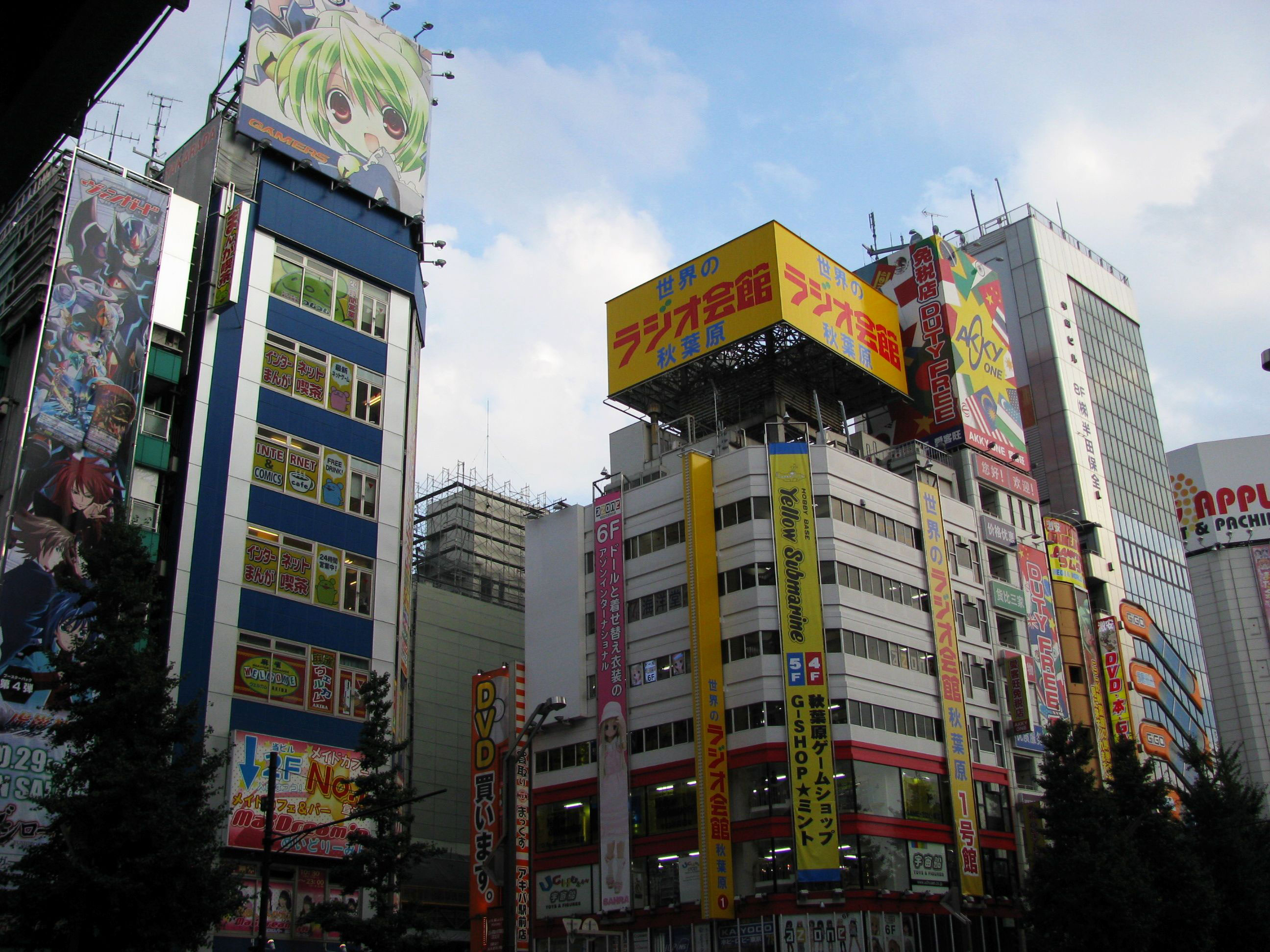 Photo credits: Google image
Photo credits: Google image
Opened in 1962, it was the first store to provide television sets, washing machines and fridges for the citizens. It evolved over time to become an otaku paradise. In 2011, after the big earthquake, it was razed to the ground, but then rebuilt to remain a reference point for anime enthusiasts.
The best entertainment place is surely the Maidreamin Maid Cafe, an explosion of colors, shows and “kawaii” themes. This is the perfect place for those of you who want to smile a bit and see what a maid cafe is, even though it is a little bit expensive. On the other hand, if you are a fan of Gundam, there is the Gundam Cafe that right at the entrance offers a small take-out for those who don’t have time to stop inside. Here you can order a taiyaki (traditional fish-shaped Japanese cake) with the shape of Gundam and other Gundam-themed dishes!
 Photo credits: akibacity.tokyo
Photo credits: akibacity.tokyo
The big green sign
 Photo credits: mishajoh.blogspot.it
Photo credits: mishajoh.blogspot.it
When we say “sexy shop” we immediately think about something “dubious”, “shady”, something to stay away from. Instead, the Pop Life Department M’S, located on the corner right outside of Akihabara station, is attractive and funny. Very clean and neat, among the shelves of M’S you can find unimaginable objects! Sets of di sexy cosplays, adults DVDs and many of them are niche products, all the latest technological inventions for “personal use” and also lifestyle products. Many visitors are simply curious tourists or young couples. Strange thing is that in the basement there are 2 vending machines that sell “used” underwears!
 Photo credits: Google image
Photo credits: Google image
Japan Travel: Shinjuku
Shinjuku
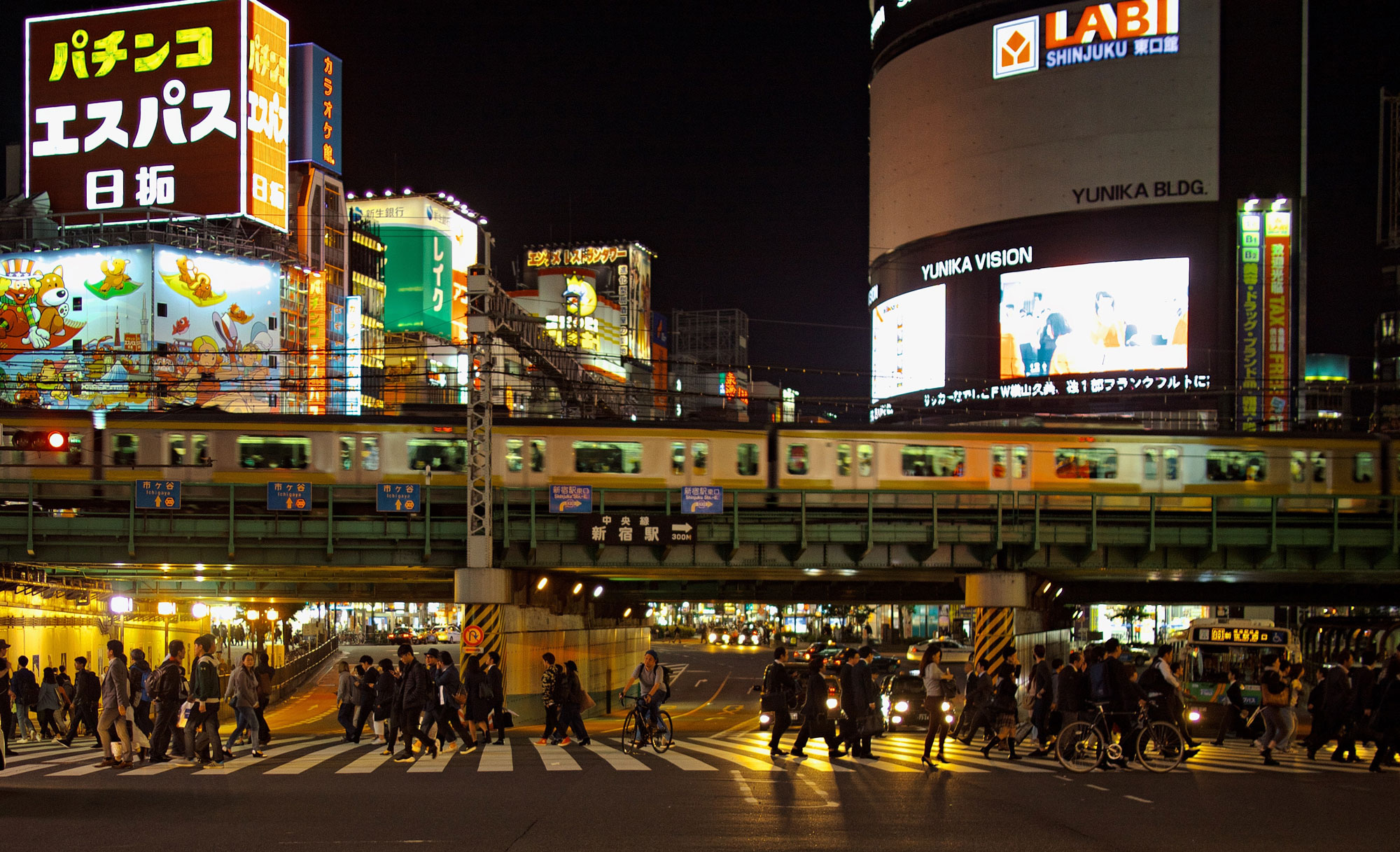
Photo credits: Sergio Rola
Shinjuku (新宿), important commercial and administrative center with the world's busiest railway node, is part of the 23 special wards of Tokyo.
Not just trains, Shinjuku is also one of the major stops for long-distance buses. The Busta Shinjuku, a large terminal, is located right at the top of the railway station.
Taking the station as a reference point, west of it, you find yourself in the Skyscraper District. Here are located the highest buildings in Tokyo including luxury hotels and the twin towers of the Tokyo Metropolitan Government building. Designed by the famous architect Kenzō Tange, it’s here that the political and public administration of the city is handled. Its towers are 243 meters high and the observation bridges, located on the 45th floor, are open to the public for free.
Right from those observation bridges, one can see the Mode Gakuen Cocoon Tower, a skyscraper located in the financial district of Nishi-Shinjuku. 203 meters high, consisting of 50 floors with three schools inside: a fashion one (Tokyo Mode Gakuen), design one (HAL Tokyo and Shuto Ikou) and a medicine one. The architecture, also designed by Tange, gives to the skyscraper a cocoon shape created by the twisted white aluminum tubes (curtain wall) that rise diagonally.

Photo credits: Google immagini
Shinjuku is not only modernity but also houses one of the largest and most enjoyable parks in Japan: the Shinjuku Gyoen, where cherry blossoms is renowned for being among the best in the country. The park was opened to the public in 1949 after being the Garden of the Imperial family since 1903.
Shinjuku’s districts

Photo credits: Gor Badoyan
Among the most famous and discussed neighbourhoods, here is Kabukichou, located northeast of the station. It is the largest red-light district in Japan, and perhaps it is for this reason that the entrance is announced by a great red light sign. The history of this district is really curious: its name derives from a kabuki theater that was never built. Since 1872, fifth year of the Meiji Era, when laws governing relations with geishas and prostitutes were revoked in Japan, Kabukichou became the main red-lights district of Tokyo. Subsequently, laws against prostitution became stricter and after the Second World War the district was subjected to some attempts to change its image. It was then made an attempt to bring here Ginza's Kabuki-za theater, destroyed by a fire, but eventually the theater was rebuilt in Ginza, while in Kabukicho just kept the name.
Later on, another theater was built in Kabukichou, the Koma Theater, located in a building that contains some bars and nightclubs.
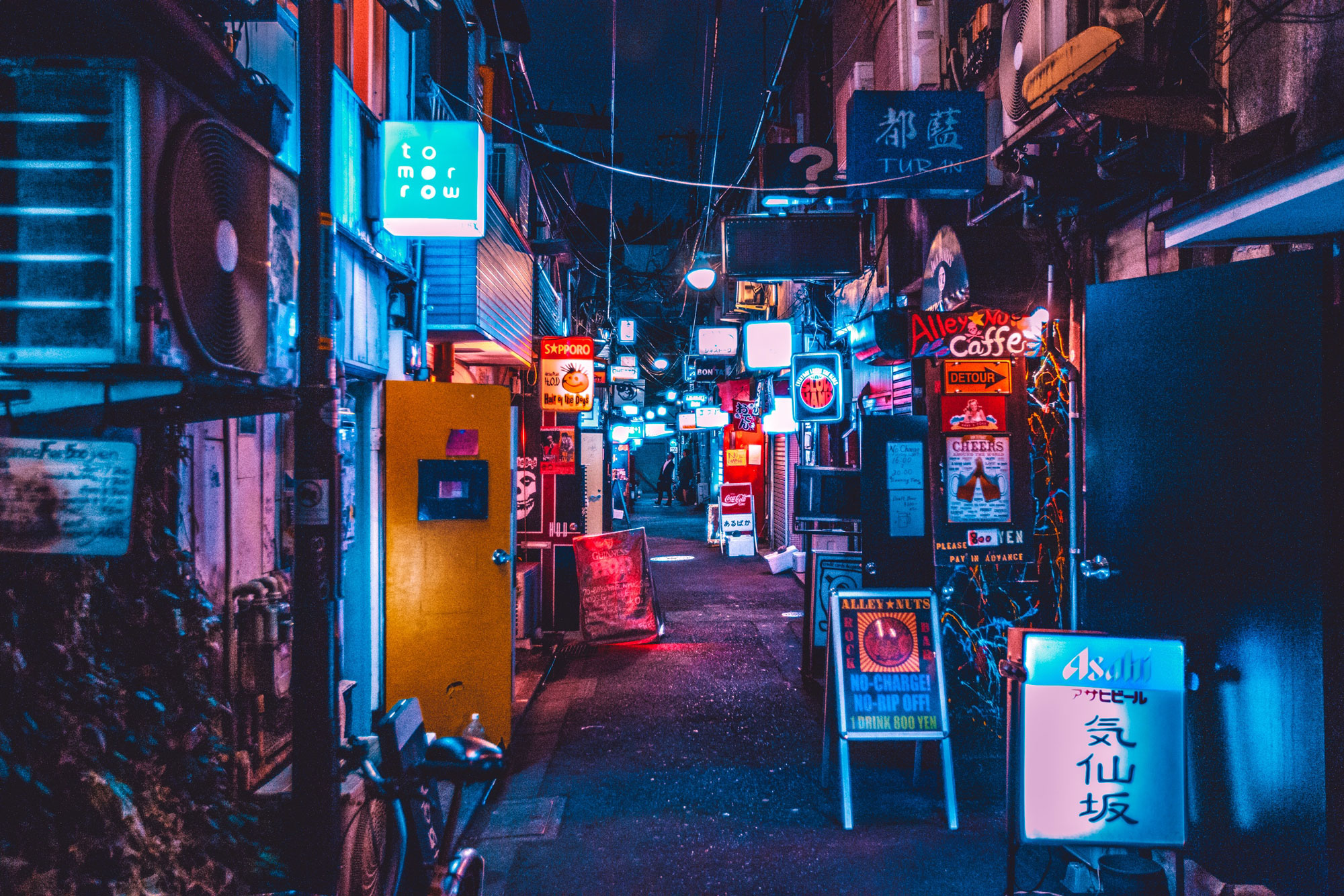
Photo credits: Benjamin Hung
Kabukichou never sleeps and this area boasts numerous restaurants, bars, nightclubs, "love hotels" and a variety of red-light structures for all sexes and orientations. Walking down Kabukichou’s streets can be risky in terms of expenses. Prices are exorbitant as everything is handled exclusively by Yakuza, one of the reasons why Kabukicho is also one of the safest neighborhoods in Tokyo because there is an attentive control over the various activities. Right here, in a maze of narrow alleys we come across the Golden Gai (the Golden Street) where a series of very small and peculiar bars peek out. The seats inside are limited, 2 to 5, and may be often located in basements as well! Moving around among them, you can hear loud laughs and if you spy inside you may spot eccentric people, writers, directors and some curious tourists. These small places can also have a theme, but in each of them what you can always drink is the yamazaki, a particular Japanese whiskey.
Out of the Golden Gai, we find Ichigaya, headquarter of the Ministry of Defense. Okubo, filled with Korean stores selling traditional food and many classical gadgets of the Korean pop culture. There are also Korean-themed bars, red-lights clubs and restaurants. Shinjuku ni-chome, is Tokyo's gay district, and finally Takadanobaba. The latter, is an area mainly frequented by students from the nearby Waseda University and Gakushuin University, there are preparatory schools and entertainments, and many bars and Izakayas. The Izakaya, consisting of the words "i" (sit down), saka (sake) and ya (shop), is a typical Japanese restaurant that sells drinks accompanied by food, a kind of pub.
The symbol of Takadanobaba is the "Big Box", a large box-shaped building next to the station.

Photo credits: Google immagini
Sacred and profane

Photo credits: Node Reaver's Blog
It sounds incredible, and yet it is right among Shinjuku’s skyscrapers that a space of peace and prayer opens up: the Shinto Temple Hanazono. It was founded in 1600 and is often visited by businessmen as the temple is devoted to the gods of economic success. It is almost a fundamental stop for tourists who, having walked around the chaotic Shinjuku, want to find some rest and, every Sunday, look around the antiques market. There are many festivals and religious events that take place at the Hanazono, the main one is held the last weekend of May, the Jinja Reitaisai. On this occasion there is a modest procession in which the small mikoshi is carried by the worshippers. Outside the temple 100 stands of every kind crowd the surrounding space offering a perfect interweave between sacred and profane.

Photo credits: Google immagini
Japan Travel: Shibuya
The Dynamic Shibuya
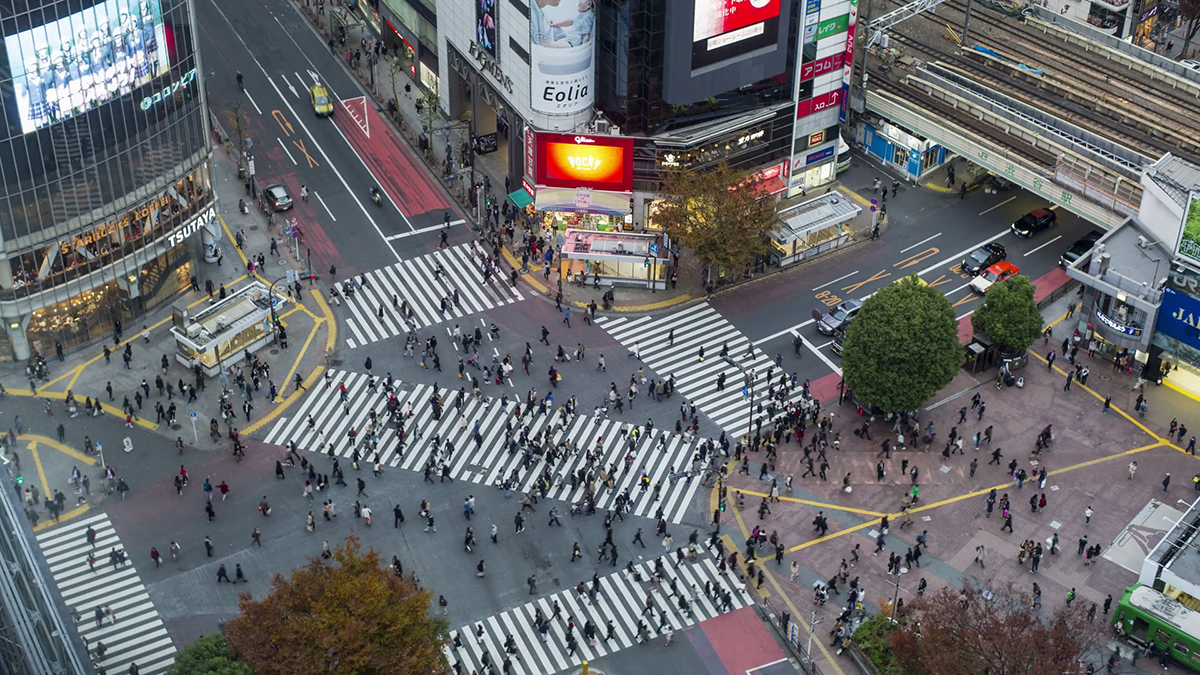
Photo credit: Google
Shibuya (渋谷区 Shibuya-ku), known as the most dynamic area of the city, is one of the 23 special wards of Tokyo. It develops around the area of the Shibuya Station, one of the busiest stations of the capital, that opens to the Shibuya Scramble Crossing, the most crowded street-crossing in the world.
All the buildings are covered by big screens that illuminate the whole ward as the sun sets. Streets are full of stores like the 109 (Ichi-maru-kyū), the iconic department store, and in particular music stores, restaurants and the famous “love hotels”. These can be found mainly in the so called Shibuya’s Love Hotel Hill. To make it all the more distinctive there are the young people leading the art of cosplay and….. well, Shibuya in one of the wards in which the Yakuza is more active!
If you don’t know what the Yakuza is, well the mystery is soon solved. It is the famous Japanese criminal organization divided in many different groups called ‘kumi’ or ‘bōryokudan’ (literally ‘violent group’) according to the legal terminology. It has its roots back to the Edo Period.
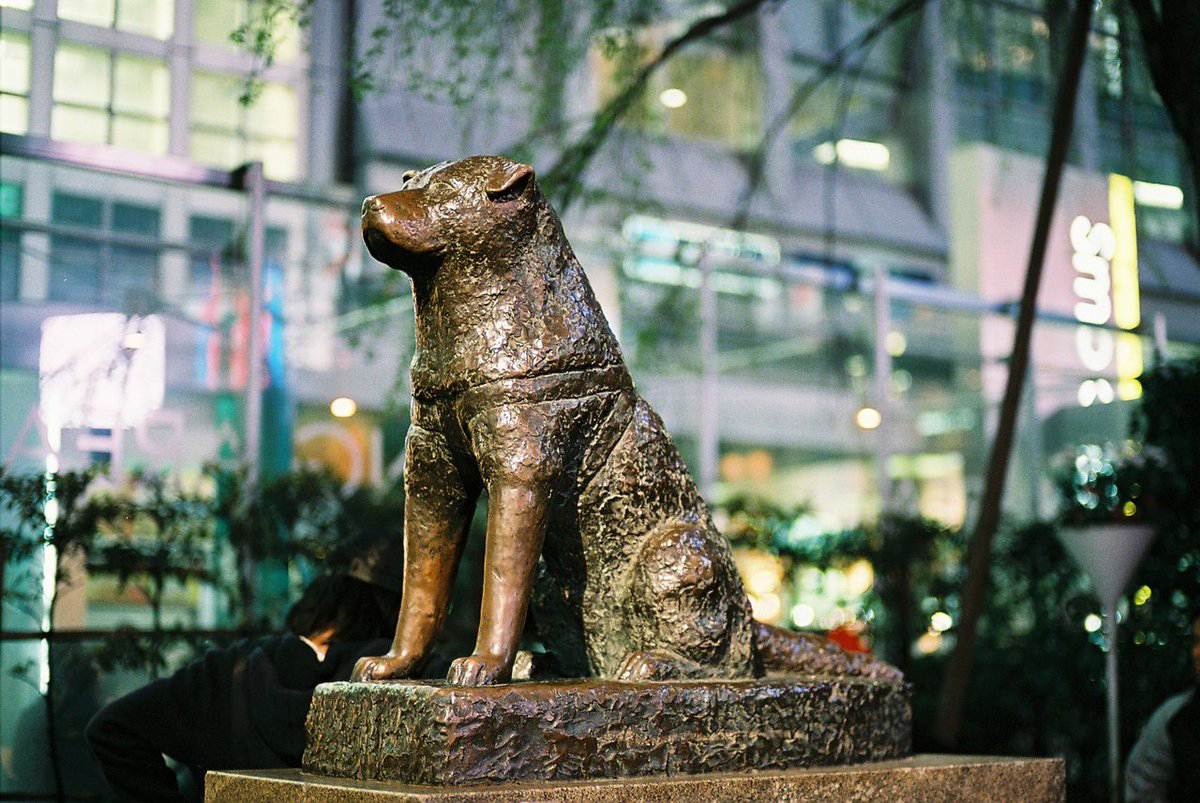
Photo credit: fotopedia.com
Yet, one of the main symbol of Shibuya is the monument dedicated to Hachiko, the dog that became famous for his loyalty to his owner, Hidesaburō Ueno. Unfortunately, the statue is just a reproduction of that original one that was lost in the Second World War.
One ward, many curiosities
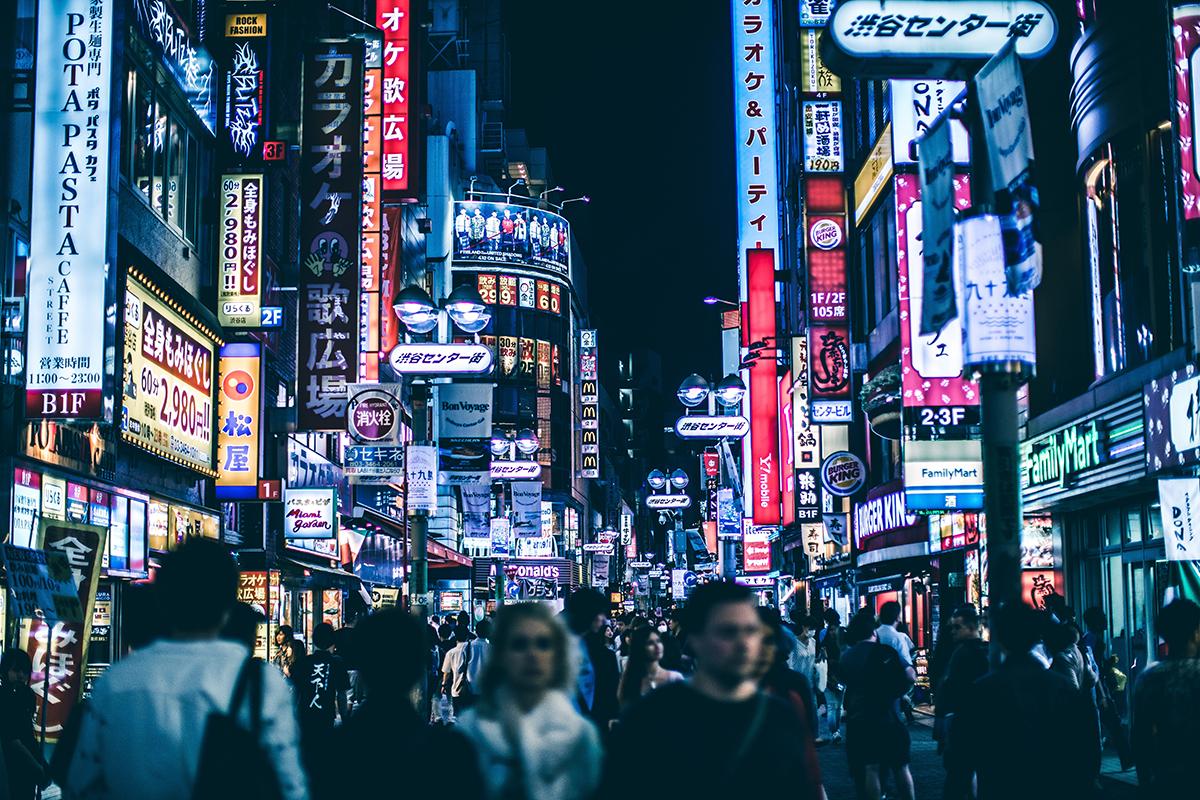
Photocredit: AndreBenz
Surely the name “Shibuya” is known to everyone. Those who love animes must have noticed that, for example, in Super Gals! there are many references to it. Not to mention that the protagonist has the habit of sitting on the statue of Hachikō to free her mind from all her thoughts! In the Digimon series the train for the “Digiworld” departs right from the Shibuya station. But its not only in animes that these kind of references can be found. In the Nintendo DS video game The World Ends with You, you have the chance to walk Shibuya’s streets faithfully reproduced in all their symbol places.
Last but not least, its right here that the musical genre of the Shibuya-kei was born as a fusion between electronic and pop music, and part of the J-pop genre.
Harajuku District
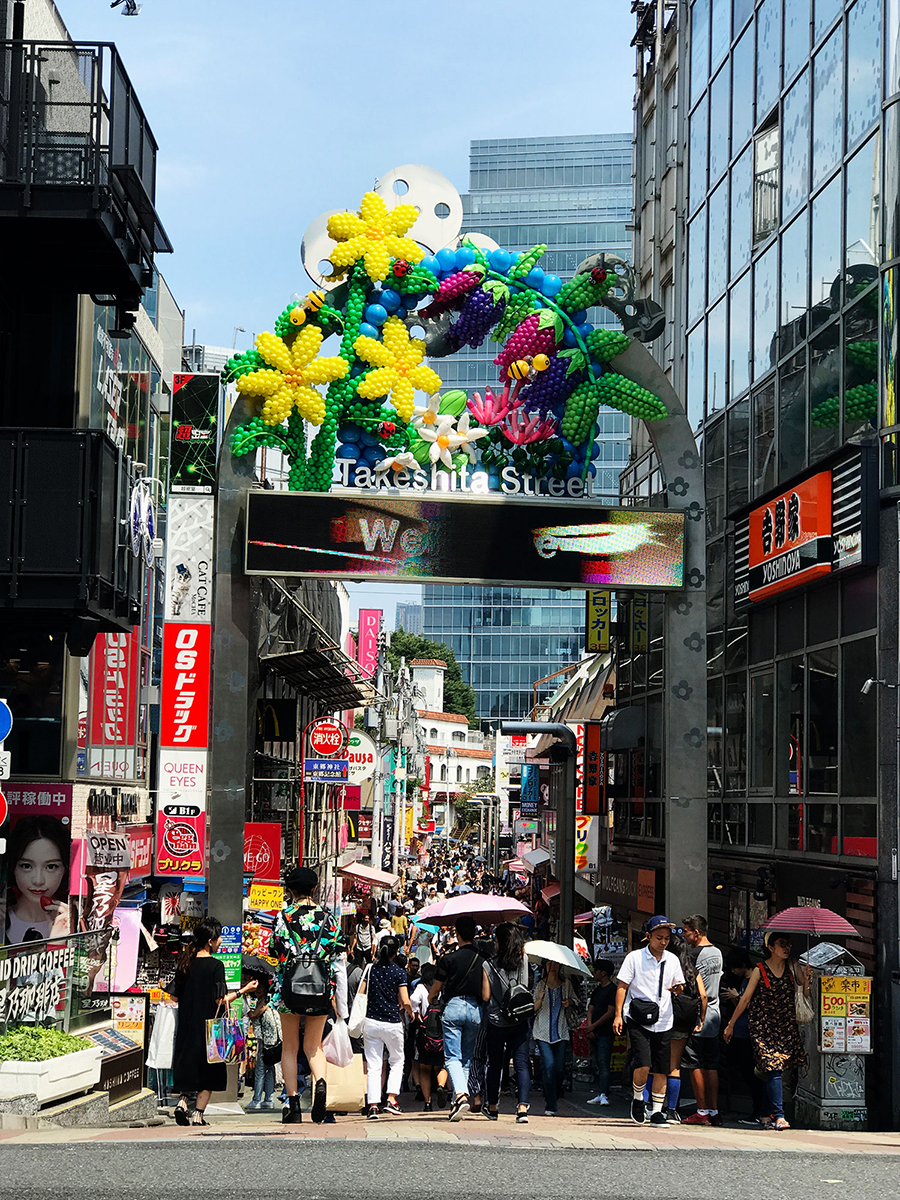
Photo credit: JAPAN ITALY BRIDGE
Harajuku (原宿 "meadow lodging" literally) is best known as the center of the Japanese extremely innovative youth trends. Two are the main shopping streets of the area, Takeshita and Omotesandō. The first one is dedicated to youth trends and is full of stores with many lolita, visual kei, rockabilly, punk and cyberpunk style items. Omotesandō, on the other hand, “Tokyo’s Champs-Élysées”, is dedicated to stores like Louis Vuitton, Chanel, Prada and Tod’s, just to name a few. The young girls that crowd Harajuku’s streets are identified as Harajuku girls. They are teens dressed according to many different styles, often very different from each other, but all with a distinguished eccentricity and very colorful. They are expressions of various subcultures, lolita, ganguro and kogal among the others
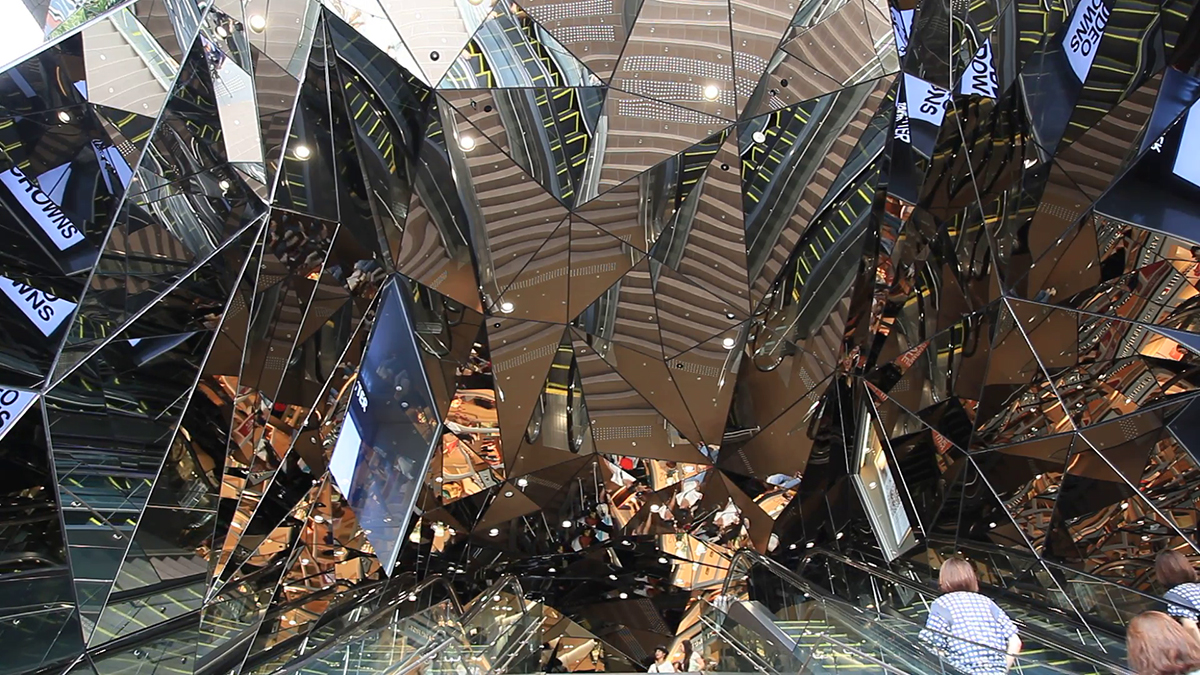
Photo credit: Google
Visual Kei was born here
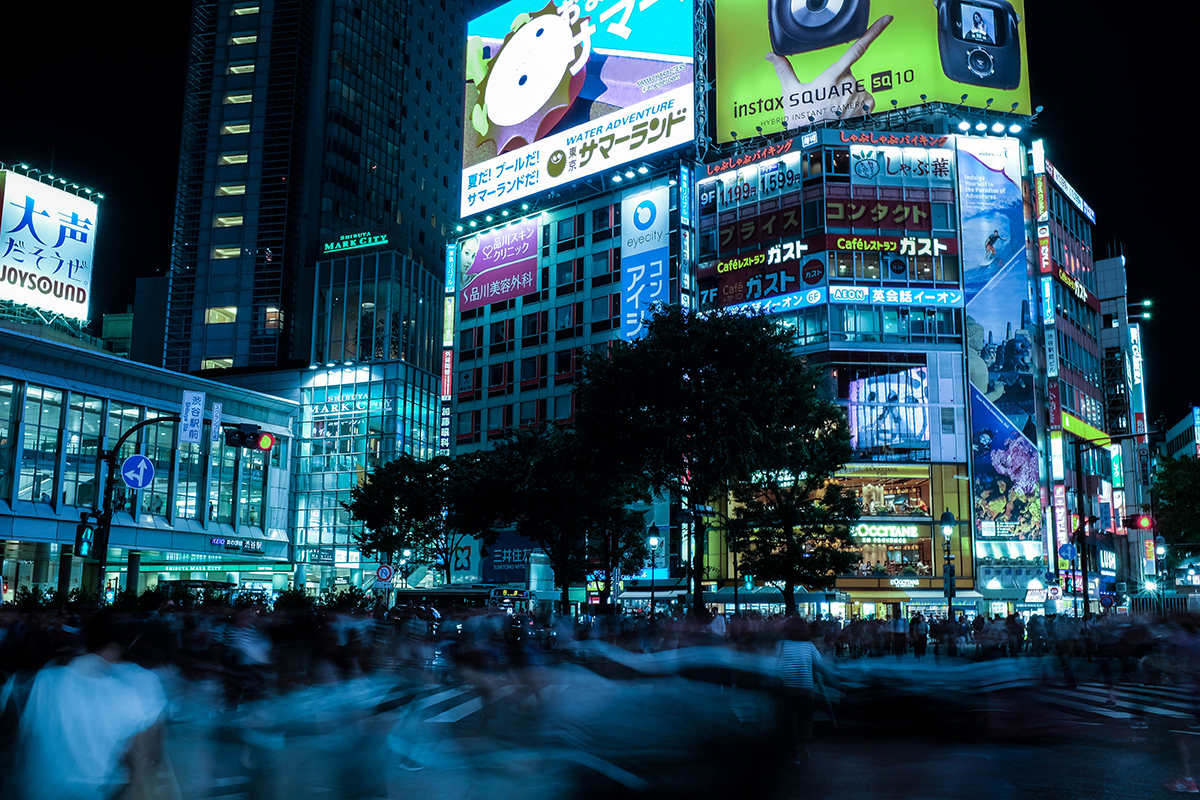
Photo credit: Alex Knigh
The musical genre of Visual Kei – from the English word visual and the Japanese word kei (系, “style”) – that was born around the end of the 80s, developed around this ward. The core of this genre is its aesthetic dimension. In fact, its various music bands distinguish themselves with the great theatricality and attention for the visual and scenographic aspect. One of the most distinctive elements is the exclusive presence of male musicians. This has its roots in the traditional Noh Theater where men play female roles as well.
Curiously, many think that the word “Visual Kei” derives from “Psychedelic violence crime of visual shock”, one of X Japan slogans, a band pioneer of the genre.
Harajuku is the perfect place to immerse yourself in this subculture, in particular on the Jingu Bashi (the sanctuary bridge), a pedestrian bridge that connects Harajuku’s center to the Meiji Shrine.

Photo credit: @camknows

Photo credit: tokyofashion.com
Japanese Culture: Vampire Knight
Vampire Knight: Japan's Vampires
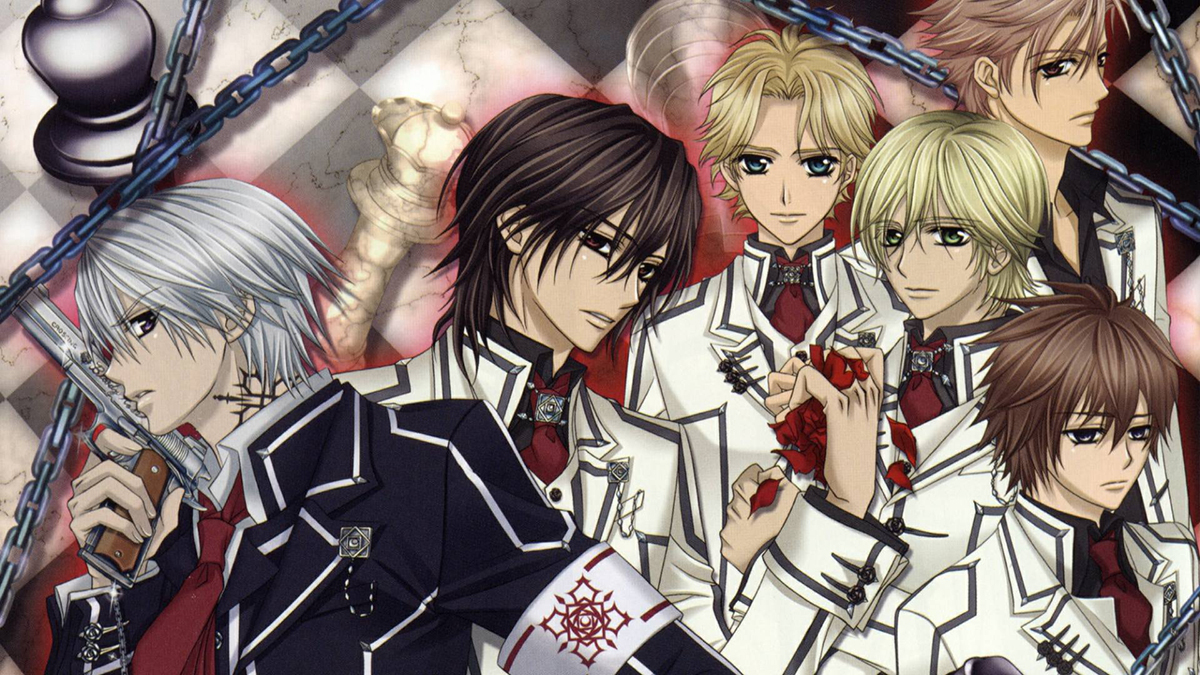
Which are the most fascinating and feared creature of the darkness of all times? The answer is simple and obvious: the Vampires.
In the common imaginary vampires have their origins in the inland Europe, but probably not many know that there is a race of vampires that actually comes from Japan! We are talking about Vampire Knight.
ヴァンパイア騎士 (Vanpaia Naito) is written by Matsuri Hino. She is a really an expert in the shōjo-gothic genre and debuted on the January number of the magazine LaLa in 2015. The artist gives us an extremely romantic image of vampires. Beautiful in the eyes of humans, they are different from the common "bloodsuckers".
They have blood running in their veins too, and drinking the blood of the beloved person is a sign of devotion like no other that will quench the thirst of the vampire who does it.
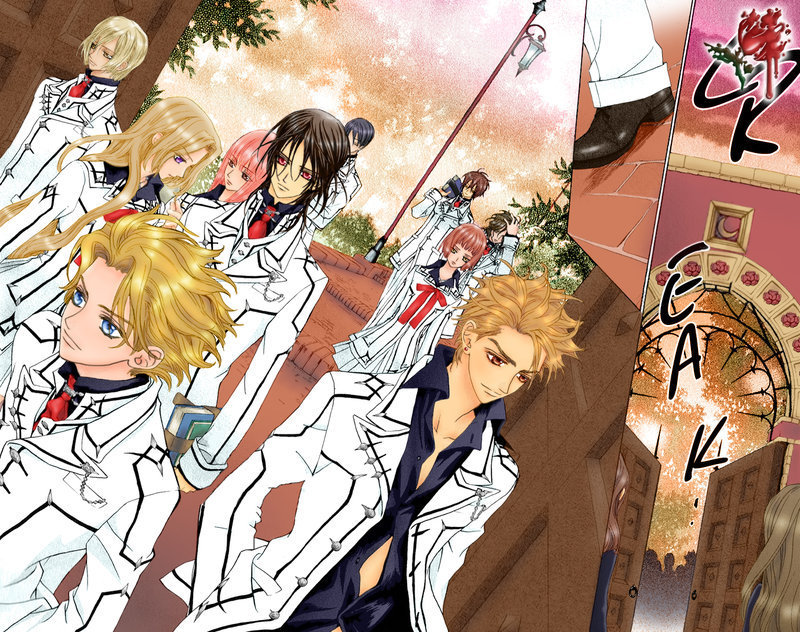
The Cross Academy
In an obscure world out of space and time the protagonists of Vampire Knight live in a prestigious private school with an unusual class structure. Students are divided in two different classes. The Day Class, attended by normal people that take their lessons during the day, and the Night Class, whose students are hiding a secret. To other students they are like an elite of geniuses, but in reality they are beautiful vampires. Only three people of the Day Class know the truth about the Night Class: the school director and the two “Guardians”: Yuki Cross, the protagonist and Zero Kiryu.
Around them, we find among others the characters of Shiki Senri, Hanabusa Aidou e Takuma Ichijo, mysterious and charming noble vampires bounded to the Pureblood and head of the Night Class Kaname Kuran by a strong friendship and the obedience imposed by hierarchy.
From this starting point takes place a thrilling story full of twist and turns. The panels, that were skillfully drawn by the artist, have a dark touch through which the protagonists communicate the anxieties of their souls and the pathos they live day after day.
The vampires depicted here are creatures surrounded by a natural sensuality. Like in the best literary tradition, even the most gory scene is magically enveloped by an aura of charm and refinement. All this contributes to make every kind of fight less bloody.
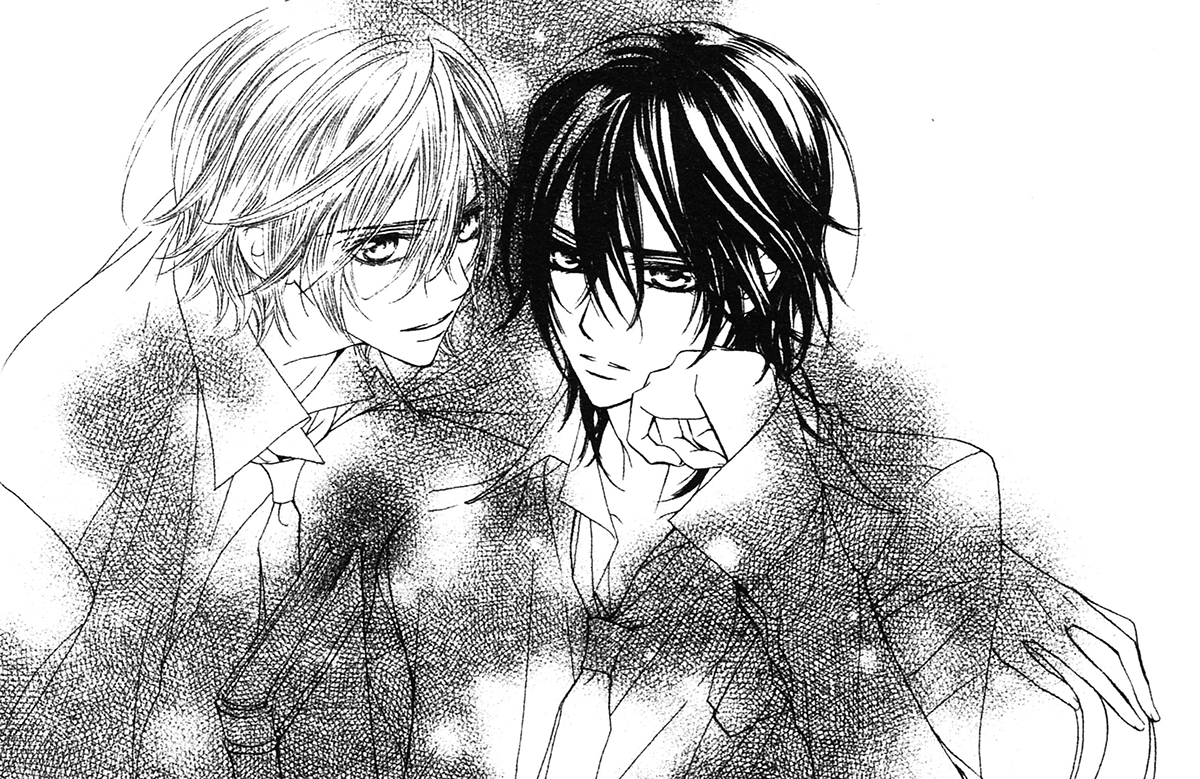
Eternal love and damnation
The characterizing theme of Vampire Knight is Eternal Love. The internal struggle of the characters to conquer what their heart truly desires, the will to withstand even the most painful choices.
Considering this aspect, Kaname’s personality is the most complex of all. Authoritative especially with his classmates of the Night Class and merciless toward his enemies. He is rarely seen smiling or letting himself go, but his personality changes in front of Yuuki. He shows all his tenderness and the great sense of protection he is capable of only with her. The metaphor of tormented love, that emotion that entails despair, pain and inner struggle. All of this embodies in the character of Kaname the determination, the strength and the ability to overcome every boundary in order to reach his objective.
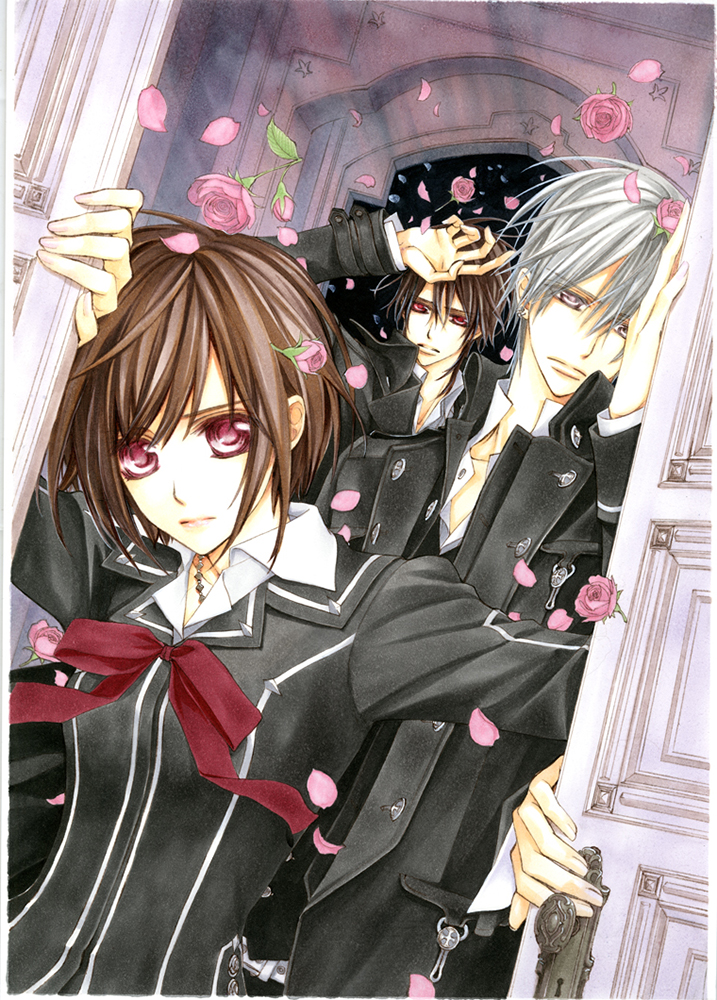
Anime, CD Drama and Novels
A story like this certainly couldn’t be left only written on the paper. The first episode of the anime series of Vampire Knight was produced by Studio Deen. It was aired on TV Tokyo on April 8, 2008. Its success convinced the director Kiyoko Sayama to work on a second series, Vampire Knight Guilty. It was aired on October 7, 2008 and a third one aired during 2014. Unforgettable are the opening themes of both seasons. These are "Futatsu no Kodō to Akai Tsumi” e "Rinne: Rondo”. Together with the ending themes “Still Doll” and “Suna no Oshiro”, they were included in the soundtrack album consisting in 30 tracks composed by Haketa Takafumi.
More than that, 2 CD drama were released. One is “LaLa Kirameki” released in September 2005. The second volume “Vampire Knight Midnight CD-Pack”, available only through online order.
Moreover, Matsuri Hino in collaboration with Ayuna Fujisaki published two Light Novels in 2008. Both novels are not specifically based on chapters of the manga but are side-stories about some characters of the story.
In November 2008 an official Fanbook was published too: “Vampire Knight Fanbook: Cross”. This last work gives further information on the characters and also includes detailed images of the author’s storyboard.
And the story doesn't end here...
Photo credit: Google images; Vampire Knight wiki;
Japan Travel: Tokyo Tower & Skytree
Tokyo Tower
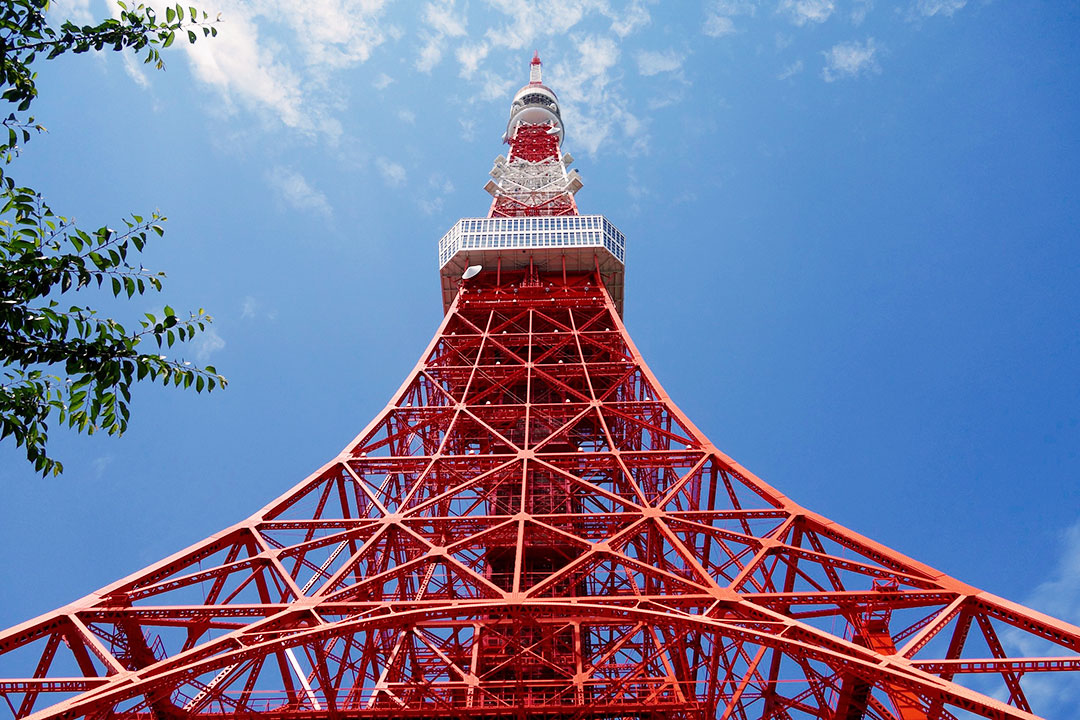
Inspired by the Eiffel Tower, the Tokyo Tower is situated in the Shiba-kōen zone in Minato, Tokyo. Built in 1958 as a symbol of economic rebirth, with its 333 meters it has a double function. It is in fact a tower for telecommunication and scenic landmark!
Completely built in steel there are two observatory that will let you have one of the best views in the world. At the first floor, situated at 150 meters from the ground, there's the main observatory offering you a scenic view on the city. At 250 meters there's another special observatory that will allow you to see the Tokyo Sky Tree and up till mount Fuji.
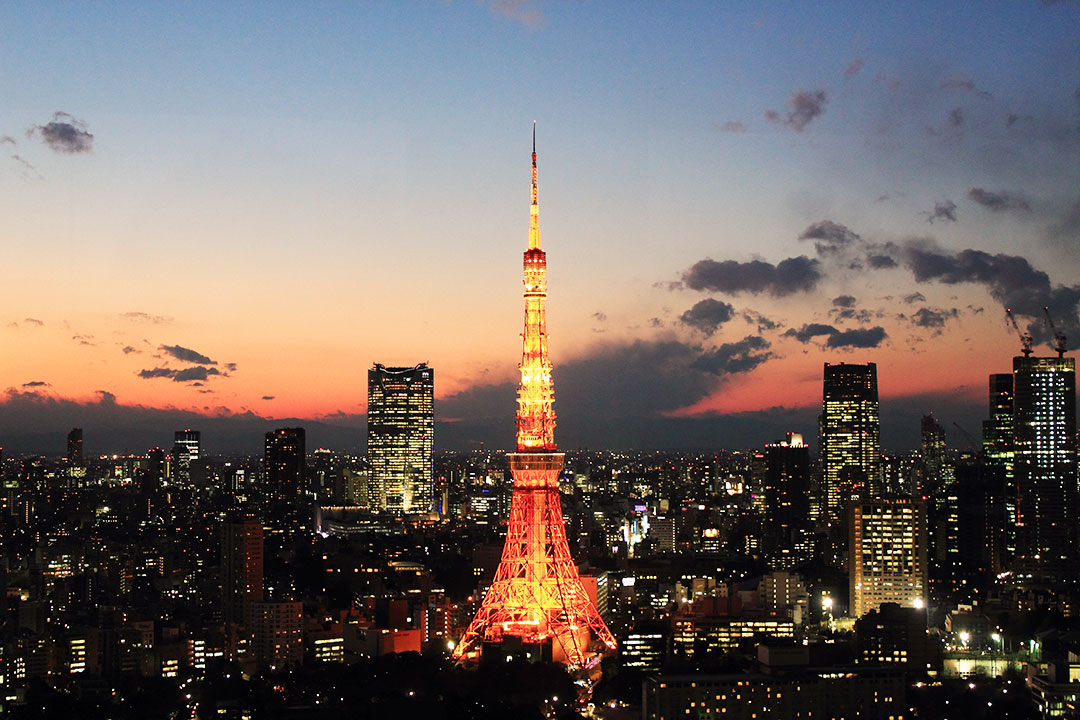
Obviously the Tokyo Tower is not just this. Inside there is a souvenir store, a very elegant bar and a stage where every week you can enjoy musical events. Even the younger ones can enjoy shows during holidays also thanks to "Noppon", the Tokyo Tower mascottes.
At its feet there's the Highball Garden Rooftop Genghis Khan: a terrace bar opened between March and September that serves specialties and exclusive cocktails.
From June 1st and August 31st there's a very peculiar and fascinating event called “Milky Way Illumination”. The stairs that go from the ground up to the observatory are enlightened with blu lights. On the roof a lot of starts will appear and it will make you feel as if you are in space. Furthermore, during the full moon nights, the Tokyo Tower lights up in a pink shade!
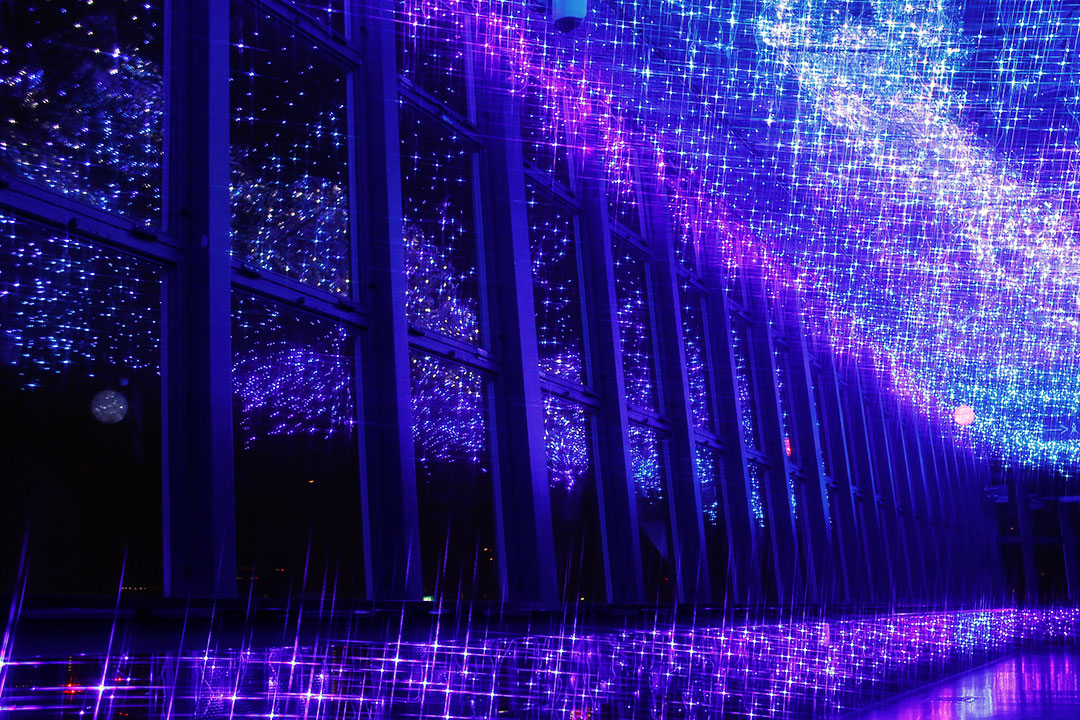
Even today, the Tokyo Tower serves the purpose it was built for. Thanks to the antenna on top, it takes care of the transmission of the signal for the main Japanese TV networks.
Tokyo Skytree

More recent than the Tokyo Tower is the Tokyo Sky Tree. Symbol of Tokyo architecture with it's shapes that reminds us of the ancient temples of the Heian era, it fills the sky with its 634 meters of height. A number that is not casual: the signs mu (6), sa (3), shi (4) they form the word "Musashi", ancient name of the region where the Tokyo Sky Tree is.
This is the highest telecommunication in the world, with one of the most beautiful sceneries thanks to the Solakara Point. Here the floor and the glass walls gift the feeling of belonging to the sky.
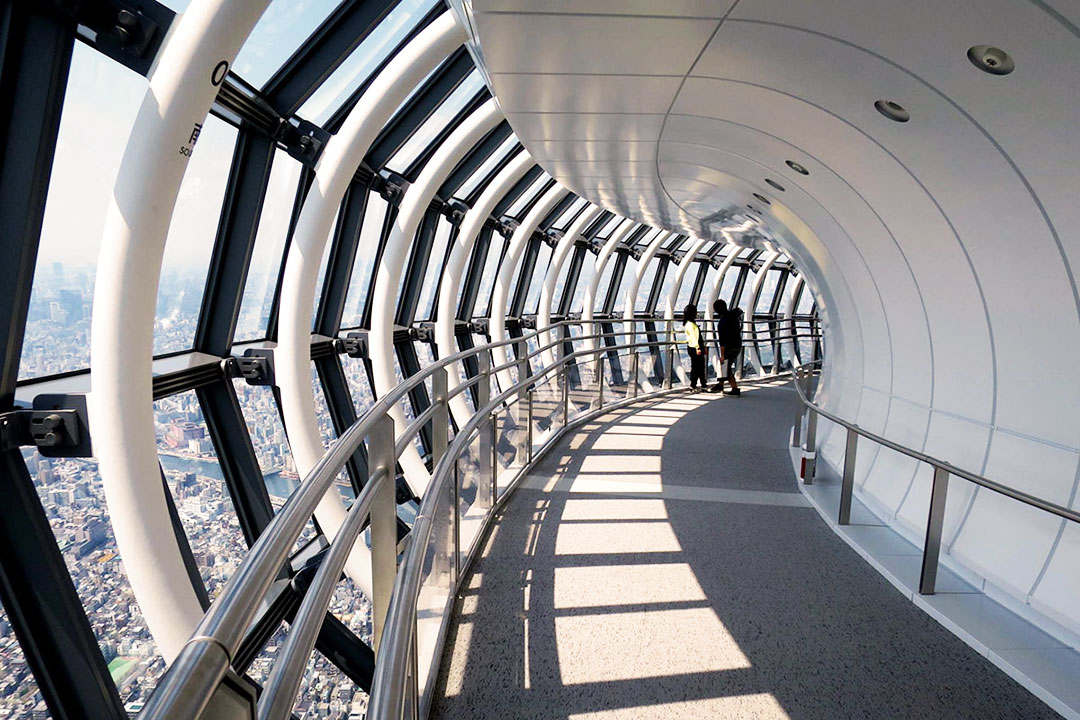
The Tokyo Sky Tree mixes modern and ancient times. From the fourth floor of the tower you can see the SUPER CRAFT TREE where the designer Yukio Hashimoto showcased his creations. The artist mixes the modern techniques with the Edo period craftsmanship. A proof of this is the TEMBO SHUTTLE, the lift with crafted panels that represent the miyakadori (the bird symbol of Tokyo), Sakura trees and the Sumidagawa river.

As custom in Tokyo, also the Sky Tree has its own mascotte, the Sorakara-chan (daughter of the Sky). Naturally, the main function of the tower is the distribution of the radio and tv signal at a regional leve.
Photo Credit: gaijinpot.com; tokyo-skytree.jp; tokyotower.co.jp; google image;







